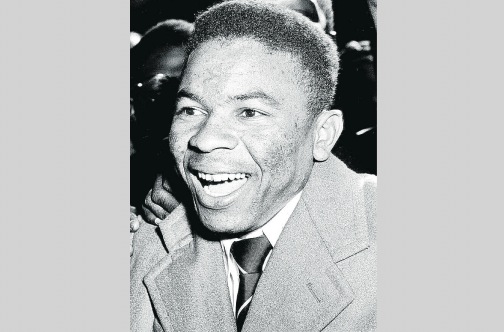- by Met
In continuing our series of serialising of sections of the book Jones Town Trench Town The Journey Back written by former Jamaica cricketer, economist and politician Paul Buchanan, today we carry a piece on the legendary former Boys’ Town, Kingston College, Jamaica, and West Indies cricketer O’Neil Gordon “Collie” Smith. The article also coincides with the Test cricket match being played at Sabina Park, a ground on which he scored heavily, now tking place between the West Indies and Pakistan, the 50th between the two teams and also the 50th to be played at the venue.)
One of Father Sherlock’s ‘little men’ was Boy’s Town’s most famous sons, O’Neil Gordon “Collie” Smith, a very mature graduate of St Alban’s Primary and Kingston College.

He would have competed with Garfield Sobers as the greatest all-round cricketer the game has known, but for his untimely death.
Beginning as a star performer in the Sunlight Cup, Collie, who lived at Albert Street, Trench Town, would come by his grandmother at 26 Septimus Street, Jones Town, every evening after practice, along with his friend, Patrick “Dust” Anderson, another Boy’s Town sportsman, to enjoy her special meals.
He was called “the Mighty Mouse” for his tremendous skill and power, and would have hit almost every leading bowler he confronted for six. This included Sonny Ramadhin, whom he hit for three sixes in 1953 during a trial match that Ramadhin was invited to play while on a private visit to Jamaica.
While not yet 21, he scored a memorable century on his Test debut, against the powerful Australians of 1955, which boasted perhaps the most formidable bowling attack of all time: Alan Davidson, Ray Lindwall, Keith Miller, Richie Benaud, Ian Johnson and Ron Archer.
In the first Test match of the 1957 away series against England, with his score on 94, he hit the miserly and accurate Brian Statham for six to complete his century on his way to a triumphant 161. He again showed his power in the Third Test, with a masterful innings of 168 runs.
COLLIE — A SPECIAL HUMAN BEING
Collie was a disciplinarian who believed in fitness and preparation. He was also a first class table tennis player and footballer, who sometimes played as a striker on the great KC Manning Cup teams of 1949 – 1952.
After making a century at Sabina Park or elsewhere, he would return to Boys’ Town and place two shillings and six pence for anyone who could take his wicket and bat until darkness overcame the grounds. He would then run five laps and the next morning swim five miles at the ‘Hot and Cold’ beach off Marcus Garvey Drive, below Tivoli Gardens.
Collie was totally without hubris, a leader of men who was loved by all. When he died in that tragic car accident at age 26, near Stone in Staffordshire, England, Boy’s Town, Jamaica and the world mourned. Humankind had lost a unique ambassador whose glory will forever be cherished wherever cricket is played, but, more profoundly, his memory will live on, as long as personal dignity and decency are exalted.
COLLIE’S TEAMMATES
There were also Collie’s not -so-famous teammates and their successors, sculpted in the grand mosaic of Boy’s Town’s history. I remember the batting stylist Septimus “Bunny” Shaw, George “Pullum” Smith, an aggressive middle order batsman who hit a first-ball six against the Duke of Norfolk’s XI; the versatile footballer/cricketer, Donald Miller; Cleveland Richards, a superb on side player who also exuded all-round ball skills in both sports; the penetrative left-arm spinner Bob Maragh; and the authoritative and elegant St Jago High and Jamaica opener, Gladstone Robinson.
A special niche is reserved for Patrick “Dust” Anderson, perhaps Boys’ Town’s and one of Jamaica’s finest wicketkeepers and goalkeeper, and a patron to struggling athletes including Deon Hemmings, Jamaica’s first female gold medalist at the 1996 Atlanta Olympics.
He crowned his career of service to his country with his ascension to the twin presidencies of the Jamaica Football Federation and the Jamaica Amateur Athletic Association.

Outstanding story we need more of these story, how maney youth walk on collie Smith Dr n don’t kno who he was n wat it represents, pleas send some more about our great garrison sport’s men,